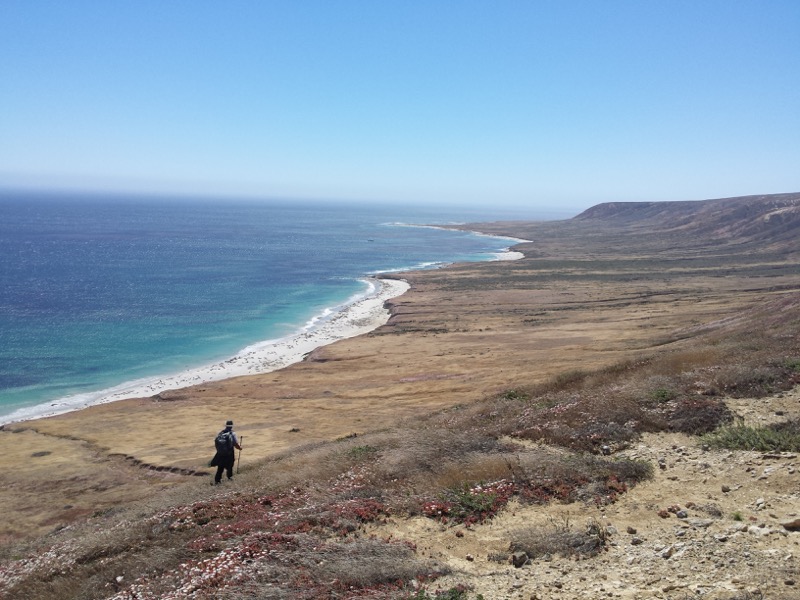
NPS Photo - A. Taylor
How hard could it be to do vegetation monitoring on a tiny island covered in grass? Turns out, very hard. San Miguel is rugged. It is steep and undulating and the ground is uneven. Oh, and let’s not forget the waiver you need to sign about unexploded ordinances from 30 years of bomb and missile testing. But all of that pales in contrast to the harsh and constant winds. They regularly blow at 35 mph (we were lucky enough to experience gale force winds one evening). What that feels like after a 9-hour day of hiking is like you were being pushed around all day and every time you try to take out data sheets someone is trying to rip them out of your hands and throw them out the window. You also can’t HEAR ANYTHING YOUR FIELD PARTNER IS SAYING! WHAT?! NOTHING, FORGET IT!
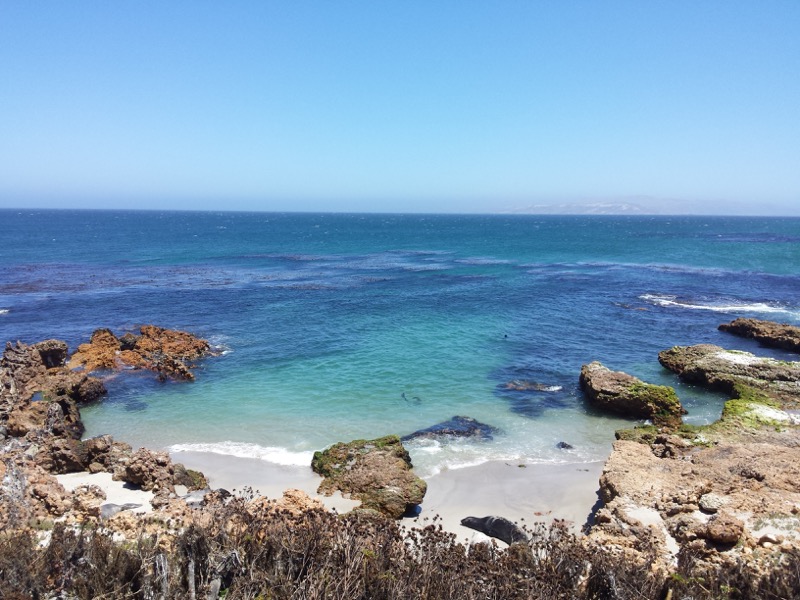
NPS Photo - A. Taylor
But if you can get past these small annoyances, the island is beautiful. There are amazing fields of endemic Dudleya greenei with creamy white flowers, pink Eriogonum grande blooms, white and yellow Malacothrix saxatilis and incana, flashy umbels of Abronia, and the very rare and beautiful magenta blooms of Lavatera assurgentiflora subsp. assurgentiflora. It was this last plant that park rangers from Channel Islands are most interested in this trip.
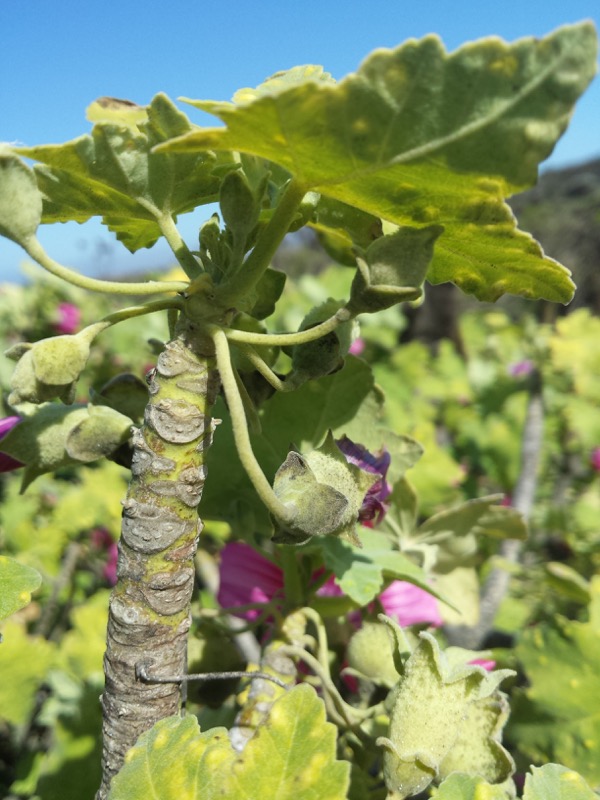
NPS Photo - A. Taylor
Lavatera is in the Malvaceae or Mallow or Cheeseweed family. You won’t find this mallow on an endangered species list (it was unfortunately overlooked) but it is indeed a rare one to find. On San Miguel there are two places this plant grows naturally. There is one patch of a few individuals on the west side of the island, and a single individual that grows on the east end. Clippings from both populations were planted near the ranger station in the center of the island and 11 plants are now established there. We checked the new population for seedlings and found none. Apparently this was expected. The plants don’t seem to reproduce from seed well, similar to the Shaw’s Agave at Cabrillo. We decided make a detour during vegetation monitoring to check out the individual on the east end of the island to see how it was doing.
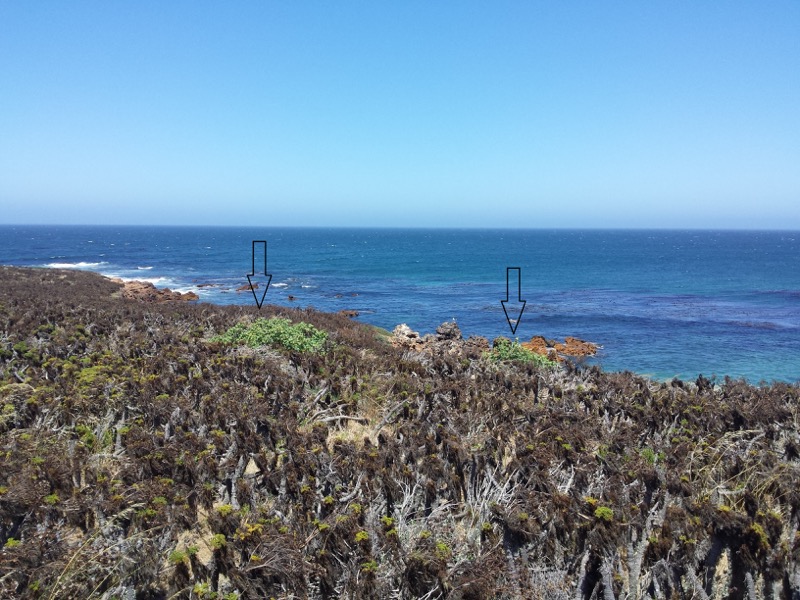
NPS Photo - A. Taylor
We wandered along the beach cliffs through a maze of Giant Coreopsis (Leptosyne gigantea). Stops were made, backtracking was done, and eventually our target was sighted. As we made our way closer Ranger Dirk excitedly noticed not one, but two healthy Lavatera shrubs. Just like that, the eastern population was doubled. It seems that a small sprout was hidden behind the Giant Coreopsis during the last check and went through a rapid growth spurt during the previous good rainy season. Two elephant seals lazily looked up from a beach below the cliff and, not nearly as impressed with our find as we were, went back to sleep.
The main reason plants like Lavatera are so rare is due to their dwindling habitat. The Coastal Sage Scrub (CSS) community where Lavatera grows has been reduced to only about 10% of it’s historical coverage. This reduction is mainly due to housing development. The CSS habitat is a highly desirable land type.
With extremely limited distribution and low numbers, these populations are composed of a highly restricted gene pool. This means they could be more susceptible to diseases, drought, or threats. Researchers hope to find a way to increase seedling success and allow this beautiful shrub to once again thrive on the islands.
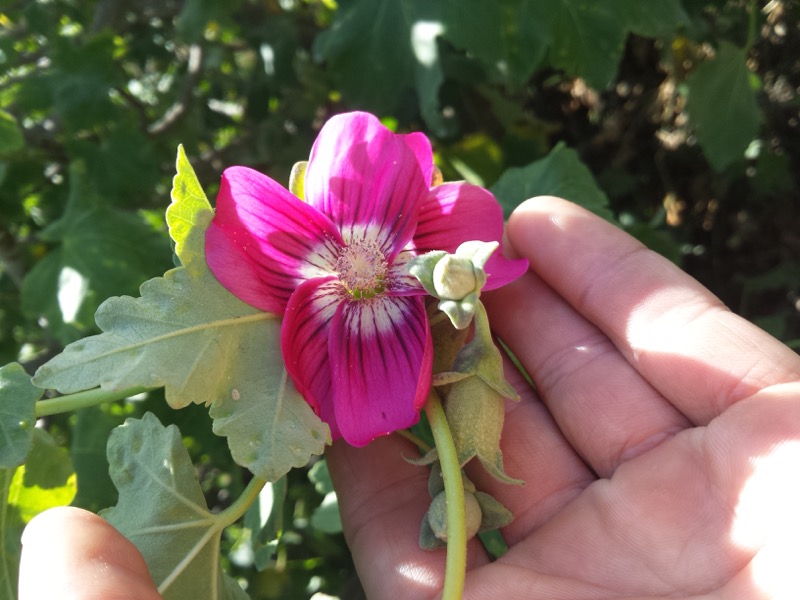
NPS Photo - A. Taylor
